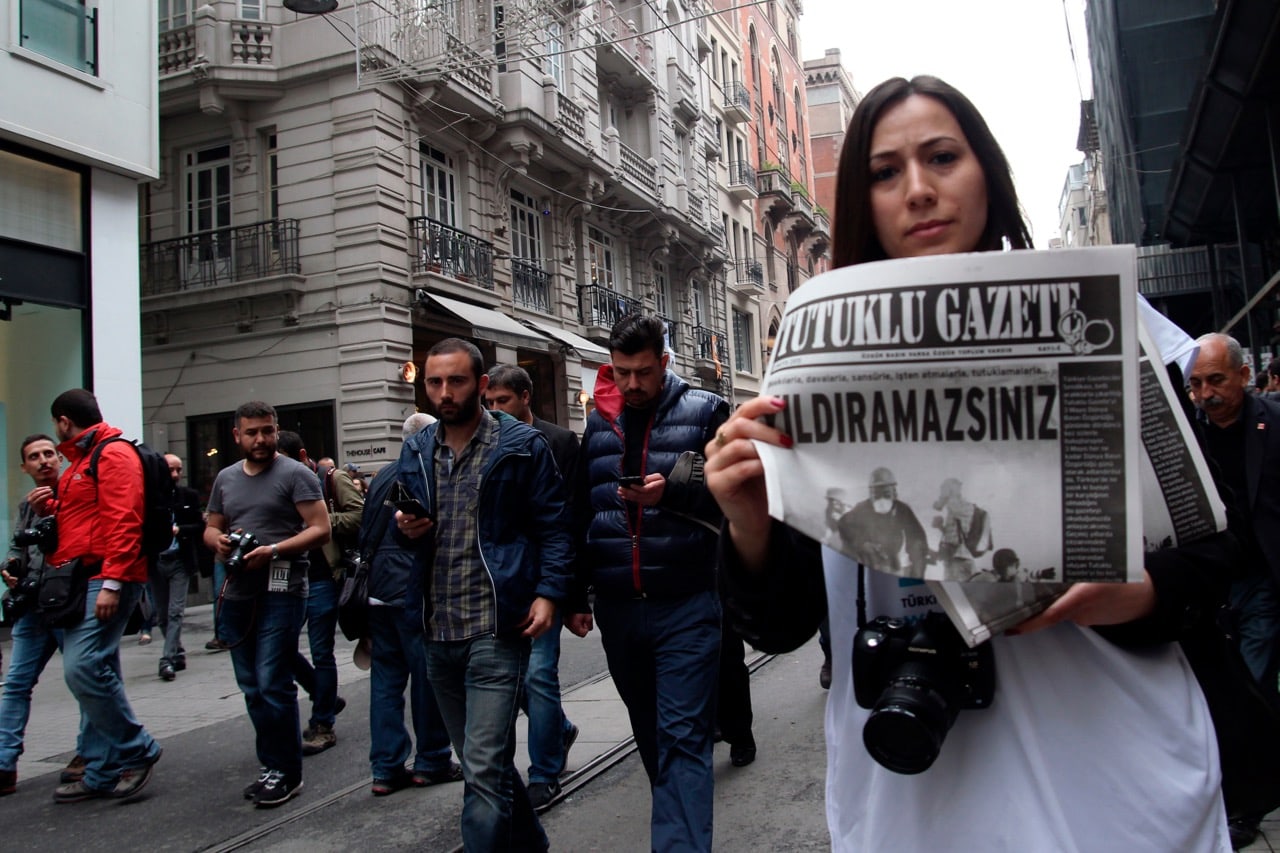Journalism is in peril in Turkey, a country that is becoming known more for its jailed journalists than the quality of their reporting. Increasingly, though, it is Turkey’s female journalists, once the frontline defenders of Turkish media freedom, who are in the crosshairs. From institutional bias to the government’s repressive gender policies, being a woman in the Turkish news business is a thankless, and often costly, endeavor.
Two years ago, the story read differently. In December 2020, the Turkish edition of Madame Figaro featured “The Jedi Women of The Fourth Estate” – five successful female journalists who were fighting the industry’s dark forces. Not only had these women established themselves in Turkey’s male chauvinistic media ecosystem, but they were still airing critical views despite an expanding bubble of censorship that was granted a legislative boost after a failed coup attempt in 2016.
Fast forward to 2022, and at least three of the five “Jedis of journalism” have appeared to become casualties of Turkey’s war on the press.
Last month, journalist and television presenter Sedef Kabaş – the first Turk ever hired by CNN International – was detained for allegedly insulting President Recep Tayyip Erdogan. Her crime: Reciting a proverb about a bull, a palace, and a barn on television. With a disproportionate show of force, Kabas’s home was raided at 2am and she was taken into custody. Prosecutors have demanded an 11-year jail term. After the sudden arrest, fellow Madame Figaro “Jedi” Ozlem Gurses, reported the arrest on social media, lamenting the fate of her colleague.Â
Since the cover shoot, each of the three other women featured by Madame Figaro have left their positions. Ahu Ozyurt, a Columbia Journalism School graduate with more than 30 years of experience in news, lost her job at TV100 in a round of layoffs. Tuluhan Tekelioglu left her job as a television anchorwoman to pursue documentary filmmaking. Even Esra Aysan, the editor-in-chief of Madame Figaro who brought the women together, has left the magazine.
“My heart is breaking,” Gurses wrote on Instagram. “All of us are educated, smart, conscientious, hardworking, strong women. The outcome should have somehow been different.”Â
Even in more emancipated countries, women are underrepresented and underpaid in the media landscape, especially in executive positions. In the United States, 73 percent of the top management jobs in the media sector are held by men. The gender gap seems hardest to bridge at the top echelons of liberal journalism. At The New York Times, for instance, two out of every three bylines are by men.
It was only after the #MeToo movement that Western media warmed up to the idea of female executives. In 2019, the Financial Times appointed its first female editor-in-chief, Roula Khalaf, in its 131-year history. In 2015, Katharine Viner broke the glass ceiling at the 194-year-old The Guardian, and Zanny Minton Beddoes became the first female editor at the Economist in its 170 years. If it took this long for women in the West to ascend to the highest rungs of the media ladder, how can one expect Turkey’s female journalists to get there sooner?
Still, the gendered headwinds that Turkish journalists must navigate are particularly fierce. Turkey ranks 133 out of 156 countries for gender equality, according to the World Economic Forum, and women make up less than one-third of Turkey’s labor force. Meanwhile, President Erdogan has pursued policies that have infuriated women’s rights activists, lawyers, and opposition politicians. He’s gone on record saying that women are not equal to men and has accused feminists of rejecting motherhood. Last year, he annulled Turkey’s ratification of the Istanbul Convention on violence against women, bending to hardliners.Â
All of this translates to a dismal showing for women in Turkey’s media industry. In 2014, the Bianet news agency found that 90 percent of newspaper editors-in-chief were men, and just 16 percent of newsroom executives were women. Further analysis conducted in 2020 by Yunus Erduran and Dilek Icten, for the Media Research Association (MEDAR), found that 20 percent of employees in print media, and 16 percent in television, are women. Moreover, a February 2018 survey of the Journalists’ Union of Turkey’s Women and LGBTI Commission, found that six in 10 female journalists have been discriminated against due to their gender, and more than 55 percent believe they are victims of unequal pay.
It’s hard not to conclude that Turkey’s leaders have no interest in reversing these trends. Months before withdrawing from the Istanbul Convention, a report prepared by the Coalition for Women in Journalism (CFWIJ) ranked Turkey first in the world for violence against female journalists. Even more troubling, CFWIJ found a 158 percent spike in police violence against women in the news, a horrific uptick that can only be read as the state deliberately targeting female journalists.
Legal harassment and intimidation by the state have become daily hazards for journalists in Turkey, and in 2021, 18 journalists were behind bars (down from 84 in 2016). Sedef KabaÅŸÂ is one of the state’s most recent victims. The government’s position is clear: journalists who speak their minds have no place in today’s Turkey, and that goes double for women.

By Alexandra de Cramer is a journalist based in Istanbul. She reported on the Arab Spring from Beirut as a Middle East correspondent for Milliyet newspaper. Her work ranges from current affairs to culture, and has been featured in Monocle, Courier Magazine, Maison Francaise and Istanbul Art News.
This article was produced by Syndication Bureau to publish on Telegraf.






